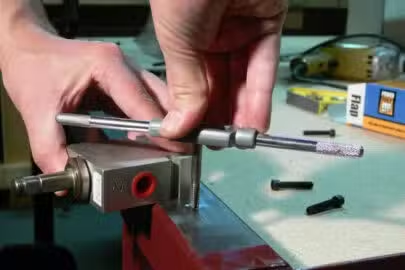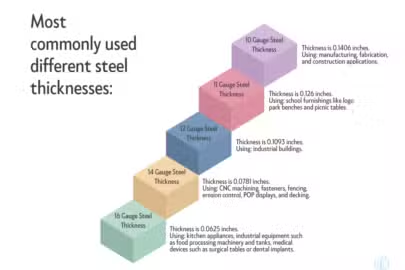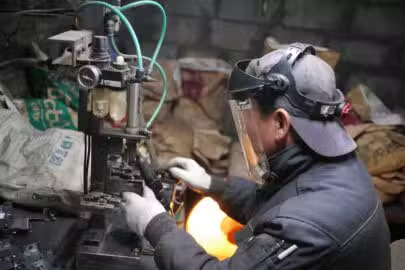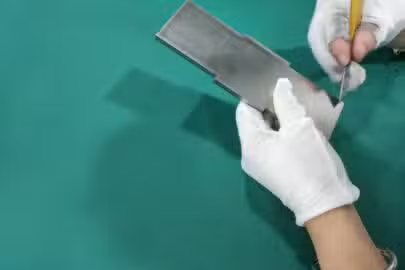Steel laser cutting is an essential subtractive manufacturing process in the machining industry that involves using a high-powered laser beam to cut through steel with precision and accuracy. The laser beam is directed at the material, melting or vaporizing it and producing a clean and precise cut. Because laser cutting is precise and accurate, intricate details can be easily created.
To summarise, steel laser cutting is highly efficient and precise, and it can be used in various industries like automotive, electronics manufacturing, and so on. This article provides an overview of metal laser cutting, including its definition, operating principles, types, advantages and disadvantages, applications, etc. We will provide helpful hints for successful cutting. Continue reading to find out more useful information.
What Is Steel Laser Cutting?
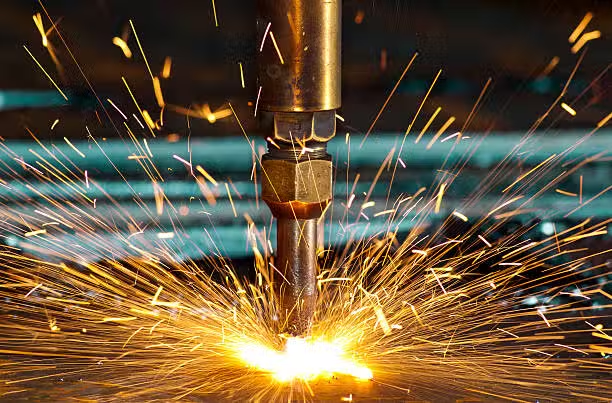
Steel CNC laser cutting is a technique that produces a cut edge by vaporizing materials with a laser. A high-power laser’s output is directed to achieve this process. The laser beam is typically guided to the material by CNC (computer numerical control) and laser optics. A laser follows a G-code or CNC of the pattern to be cut onto the material using a motion control system.
After the material is exposed to the focused laser, it melts, burns, vaporizes, or is driven away by a gas jet. This results in an edge with a superior surface polish. Steel is a metal, and because metals are denser than non-metals, it requires a stronger laser to evaporate the material from the surface. In energy storage, computer electronics, robotics, and aerospace, laser cutting is a widely used manufacturing technology.
The face plates, washers, mounting plates, panels, and flat patterns are typical laser-cutting parts. These days, schools, small businesses, architects, and hobbyists use this technology, even though it was initially developed for industrial manufacturing applications.
How Does Steel Laser Cutting Work?
These are the stages involved in steel laser cutting:
- Design Creation
The first step is to produce the design that will be cut. This is typically accomplished using CAD software, which allows for high-precision designs.
- Setting Up the Machine
The laser cutting device is then equipped with the design. Based on the particulars of the cut, such as the thickness of the steel and the preferred finish, the machine settings are modified.
- Laser Cutting
The process of laser cutting begins. With great accuracy and speed, the laser slices through the stainless steel following the preprogrammed path.
- Part Extraction and Cleaning
The completed parts are taken out and cleaned after cutting. The remaining residue, trash, and debris are removed to expose a neat, accurate cut.
What Are the Methods Used in Steel Laser Cutting?
These are the several methods used in steel laser cutting:
Thermal Stress Cracking Cutting
Thermal stress cracking cutting takes advantage of the fact that brittle materials are particularly vulnerable to thermal fracture. A focused beam is directed towards the surface, causing localized heating and thermal expansion. This results in a crack that can be directed by moving the beam. The crack could be moved at a rate of m/s. Glass cutting frequently employs thermal stress cracking.
Melt and Blow Cutting
This is also known as fusion cutting. It greatly reduces the required power by using high-pressure gas to blast molten material out of the cutting area. The melting point of the material is first reached. The molten material is forced out of the kerf by a gas jet, which removes the need to reheat the material. This technique is often used to cut metal.
Reactive Cutting
It is also known as burning stabilized laser gas cutting or flame curing. Except using a laser beam as the ignition source, reactive cutting is comparable to oxygen torch cutting. This method is frequently used to cut carbon steel with thicknesses greater than 1 mm. Additionally, it can be used to cut highly thick steel plates with a very low laser power.
Stealth Dicing Cutting of Silicon Wafers
Microelectronic chips are separated from silicon wafers in the semiconductor device fabrication process using a stealth dicing technique. It uses a pulsed Nd:YAG laser, whose wavelength is precisely tailored to silicon’s electronic band gap.
Vaporization Cutting
During vaporization cutting, a keyhole is created by heating the material’s surface to a flashpoint with the focused beam. The absorptivity suddenly increases due to the keyhole, quickly deepening the hole. The vapor that is created when the material boils and the hole deepens erodes the molten walls, forcing ejection out and widening the hole even more. Non-melting materials like wood, carbon, and thermoset plastics are frequently cut using this method.
Types Of Lasers For Steel Metal Cutting
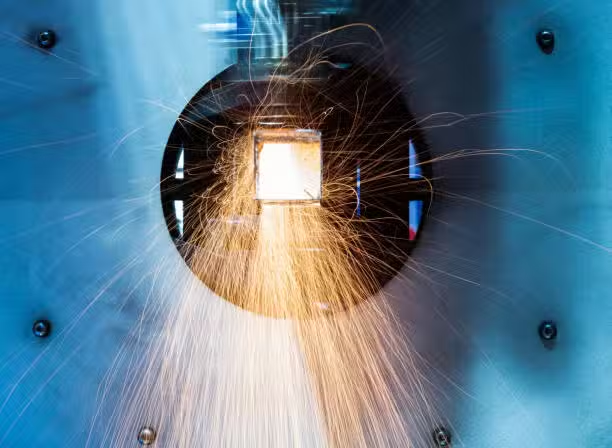
Manufacturers typically use three different kinds of lasers to cut materials. Every type of laser has unique characteristics and works best for cutting particular materials. An overview of the three types of cutting lasers is provided below:
Crystal Lasers (Nd: YAG or Nd: YVO)
Nd: YVO (neodymium-doped yttrium ortho-vanadate, or Neodymium-doped yttrium aluminum garnet are the sources of the beams produced by crystal lasers. The latter is more typical, though.
These crystals produce intense cutting power beams. They do not, however, have a long half-life of 8,000 to 15,000 hours and are costly. Plastics, metals, and non-metals, such as ceramics, are frequently cut using them.
Fiber Lasers
Fiber laser cutting machines cut fiberglass. They have a very strong power output for cutting with great precision. This laser is part of a solid-state laser family that began as a “seed laser” and was improved by unique glass fibers.
Almost any material, including metals, alloys, and non-metals like plastic, glass, and wood, can be cut with these lasers. They work well not only for cutting but also for annealing and engraving.
They are also the most resilient lasers, requiring less maintenance and offering an extended service life of over 25,000 hours.
CO2 Lasers
CO2 lasers generate laser beams by passing an electric current through a tube containing a mixture of inert gases, primarily nitrogen and helium. These are the most widely used laser forms because they can quickly and effectively cut through various materials.
On the other hand, their cutting power is lower than fiber lasers. As a result, they could be a better option for laser cutting steel. Manufacturers usually like to use them for cutting organic and non-metal materials, such as acrylic, paper, and wood.
What Are the Pros of Steel Laser Cutting?
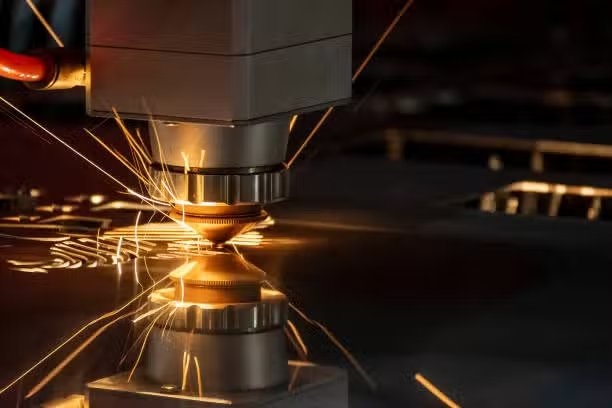
Here are some of the advantages of steel laser cutting:
Low Energy Consumption
Laser cutters need power to heat and melt materials for cutting properly. Nonetheless, compared to other cutting techniques, the cutting technique uses less energy.
In contrast to other machines, it also requires less energy because it has fewer moving parts. The machine’s high speed also results in rapid cutting, which saves energy and time.
Compatible With Most Materials
The fact that this subtractive manufacturing technique can work with a wide variety of materials is another important benefit. Copper, aluminum, stainless steel, and even titanium are all easily cut through by it. After all, melting the material requires the use of extremely hot lasers.
Damage Prevention
There is a misconception that warping occurs when metal is cut with a laser. But that is not accurate. Tolerance is unaffected by the heat from laser cutting, which only affects tiny portions of the material.
It also cuts quickly because the heat from the lasers melts away the parts that need to be removed. Thus, the other components of the material are not greatly impacted by the heat. Most of the time, your materials are not warped or distorted.
Automated Process
Computer Numerical Control (CNC) systems power laser cutting. The process operates independently when the technical operator enters the programs into the computer. As a result, it needs less labor overall and human intervention. The margin for error is also reduced or eliminated with increased cutting efficiency.
Relatively Low Cost
Laser cutting equipment is indeed costly. It’s more affordable, though, when measured against other CNC machines. Additionally, a single laser cutting machine is perfect for all your cutting tasks—it’s “one machine for all.” No modifications to the machine are required for varying cutting operations.
Furthermore, it is robust. There is little to no friction and surface wear because the device does not come into contact with the materials you are cutting. Additionally, because it is a single piece, it requires less upkeep and servicing. When utilizing a laser cutter instead of other traditional manufacturing tools, the operating costs are generally lower.
High-Precision and Accuracy
Laser cutting is a perfect choice for cutting steel due to its high level of precision. The equipment on the machines allows for incredibly accurate and precise cutting of complex shapes. When cutting steel metal with precise details and tight tolerances, laser cutting is the method of choice in the industrial world.
With an accuracy of up to 0.0005 inches, certain cutters can produce exact cuts. For this reason, it continues to be a standard in most manufacturing firms. The cutters cause little to no burring because the lasers melt away the metal components. Rather, it leaves behind a crisp, smooth, and clean edge.
What Are the Cons Of Steel Laser Cutting?
Here are the major disadvantages of steel laser cutting:
Requires High Capital
Purchasing a high-quality laser cutter is expensive. It costs more than $2000, nearly twice the price of other cutting machines such as water jet cutters. To run a laser cutter business, you must be willing to make the initial investment.
Release of Harmful Gases and Fumes
As we’ve established, a laser cuts materials by melting them with heat. The machine emits toxic gases and fumes into the air as it melts each material. It is therefore best to use these machines in a room with good ventilation.
Metal Thickness Limitations
Laser cutters work well with a wide range of materials, particularly steel. When working with thick metals, you should consider other cutting techniques. In most manufacturing industries, laser cutters cut steel sheets with a maximum thickness of 6mm and aluminum with a maximum thickness of 15mm.
Requires Technical Operation
To use a laser cutting machine effectively, you need an expert who understands all of its features and can spot a problem quickly enough to make appropriate corrections in time. If you do not properly set up the device, you risk damaging your materials or the machine. So, to operate a laser cutting service, you must hire a professional.
Considerations for Creating the Perfect Laser Cut Steel
These are some of the design considerations to get the perfect steel laser cut:
- Identify Line Thicknesses and Depths
When submitting your file, clarify and identify what each line style means.
- Close the Edges of Your Design
Everywhere you intend to have open or free of metal must be surrounded by a complete, closed contour. If you want a circle laser cut out of a sheet of metal, for example, make sure the arc in your file is a fully connected circle.
- Mind Your Notches and Sheet Tabs
Getting the tabs and notches right maintains the structural integrity of the metal sheet or plate while the product is being manufactured.
- Decide on Rounded Metal Corner Fillets or Sharp Angles
Sheet metal parts frequently have sharp corners. Sharp corners can be made safer by adding fillets.
- Plan for Precise Holes and Laser Accordingly
It is recommended to use a laser cutter to pierce and etch the designated locations for said holes if you want holes with tight tolerances. Following that, use a drill bit to drill the holes straight.
- Your Details Shoul Not Be Smaller Than Metal Thickness
The thinner the material, the less the laser can penetrate and cut it.
- Remember the Kerf
Kerf is the term used to describe the material that evaporates when the laser beam strikes the laser cutting material.
- Correctly Lay out Your File for Multiple Parts or Thin Features
When cutting multiple rapid prototyping parts from the same metal sheet, it’s often preferable to leave at least the thickness of the material between them.
Applications Of Steel Laser Cutting Parts
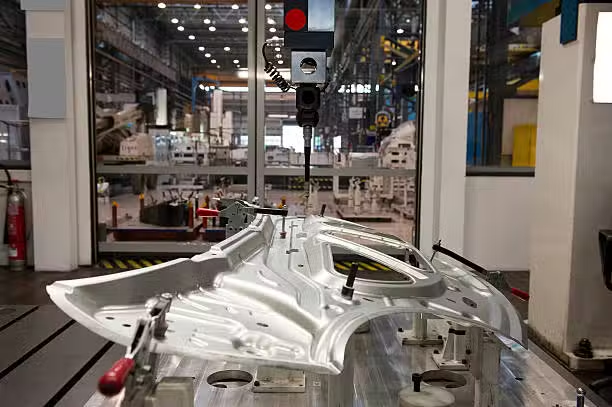
Below are the applications of steel laser cutting:
Personal Uses
Hobbyists, enthusiasts, students, teachers, and others can all benefit from steel laser cutting. They can use this technology to create or enjoy various fun and educational personal projects such as toys, models, games, educational kits, science experiments, etc.
Interior Design
Laser-cut steel metals are a perfect choice for dividing rooms, which can help improve the overall appearance of a room while also creating more space. Using the precision of laser cutting with the manufacturer’s creativity can provide you with the custom looks you desire for your room.
Jewelry Production
Most jewelry designs have intricate designs that laser cutters can easily map out. Jewellery is frequently made of thin materials such as steel. As a result, laser cutting is an excellent choice for jewelry fabrication.
Aerospace Industries
The aerospace industry is a major user of steel laser cutting technology due to its high dimensional accuracy. During the manufacturing process, most parts of airplanes and other devices, such as metal detectors, trolleys, and conveyors, are cut.
Medical Equipment
Laser-cut steels can be found in trolleys, beds, surgical equipment, orthopedic pins, rods, etc. Even though many surgical instruments are now 3D printed, laser cutting is still the preferred sheet metal fabrication method.
Conclusion
Laser cutting steel is a rapid prototyping technology for cutting steel. This article discussed the operation, types, and other information you should know. We believe you have learned something new about steel laser cutting. Zintilon CNC machining services can be relied on for the best laser cutting services.
Zintilon laser cutting service is what you want for your fabrication if you want to work with a company that guarantees quality laser cutting services. We are an ISO-certified company specializing in laser cutting for rapid manufacturing and custom production. We can meet every one of your demands; get a quote today!
FAQs
Does CO2 or Fiber Laser Cut Stainless Steel Better?
Each type of laser offers benefits. Fibre lasers are generally more effective, offer a more concentrated beam for exact cutting, and work better on thinner materials. Conversely, CO2 lasers can cut through thicker materials and be less expensive initially, but they might have higher running costs.
Will Laser Cutters Destroy Your Materials?
No. Many people believe that the high temperatures of laser cutting will damage materials. Laser cutters, on the other hand, are precise and work at such high speeds that the beam only melts out the area you intend to cut. Furthermore, the high speed means that your materials are not exposed to high temperatures for an extended period.
Should You Outsource or Get a Laser Cutting Machine for Your Steel Parts?
Laser-cutting techniques are essential for a variety of manufacturing operations. It is a highly efficient process for cutting most materials, particularly steel.
If you run a small-scale manufacturing service, it is better to outsource your cutting operation. That is, hire a laser cutting service. It will assist you in cutting costs, which can then be channeled into other aspects of production. Zintilon can help you with your laser cutting needs.
